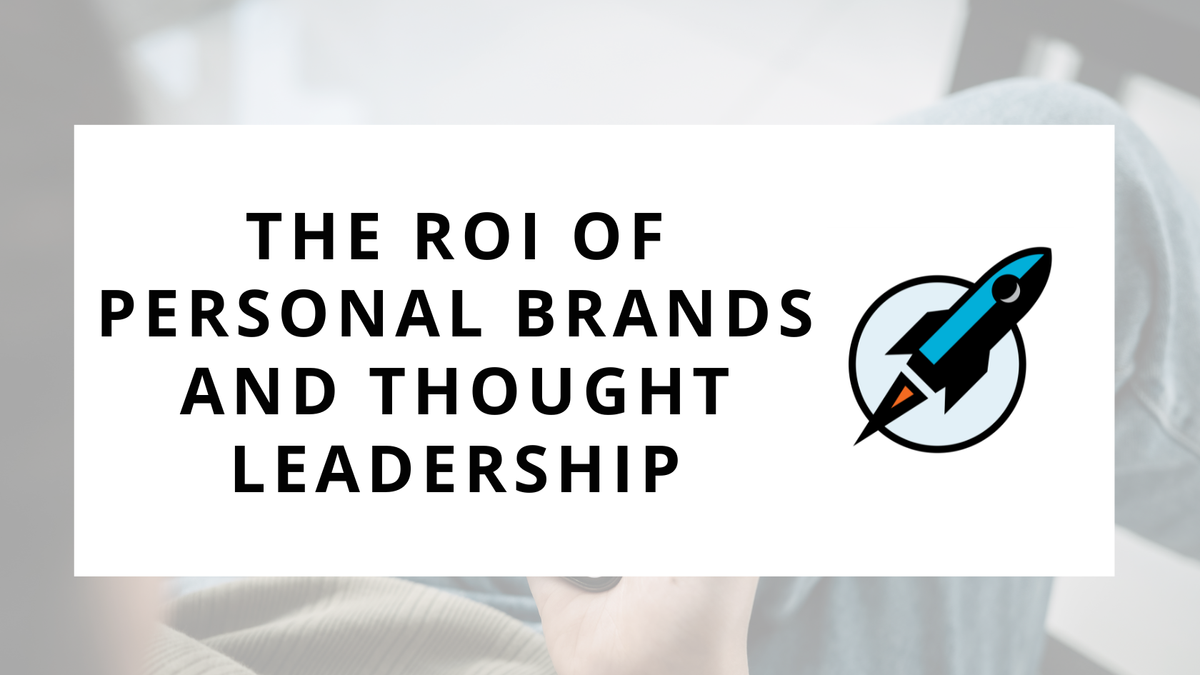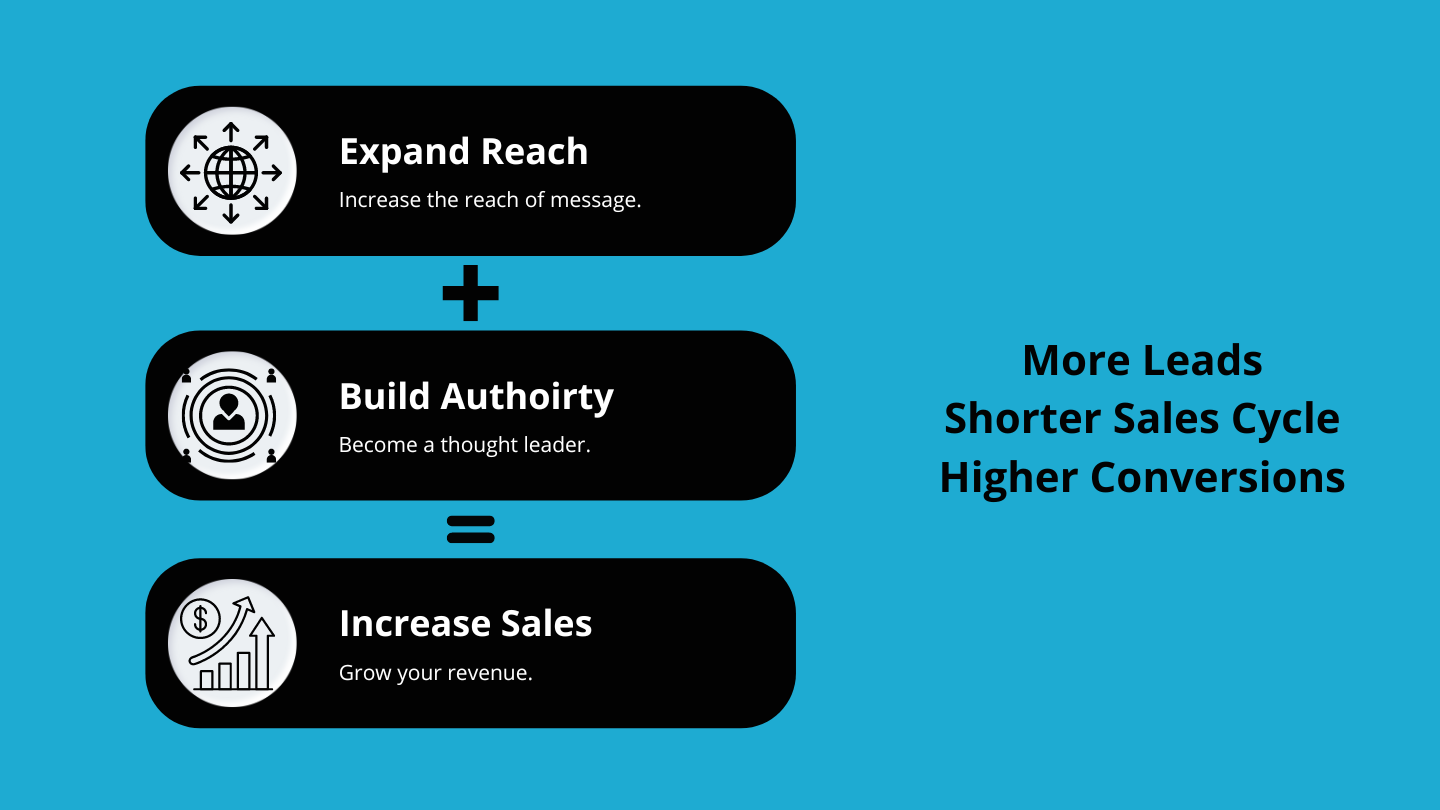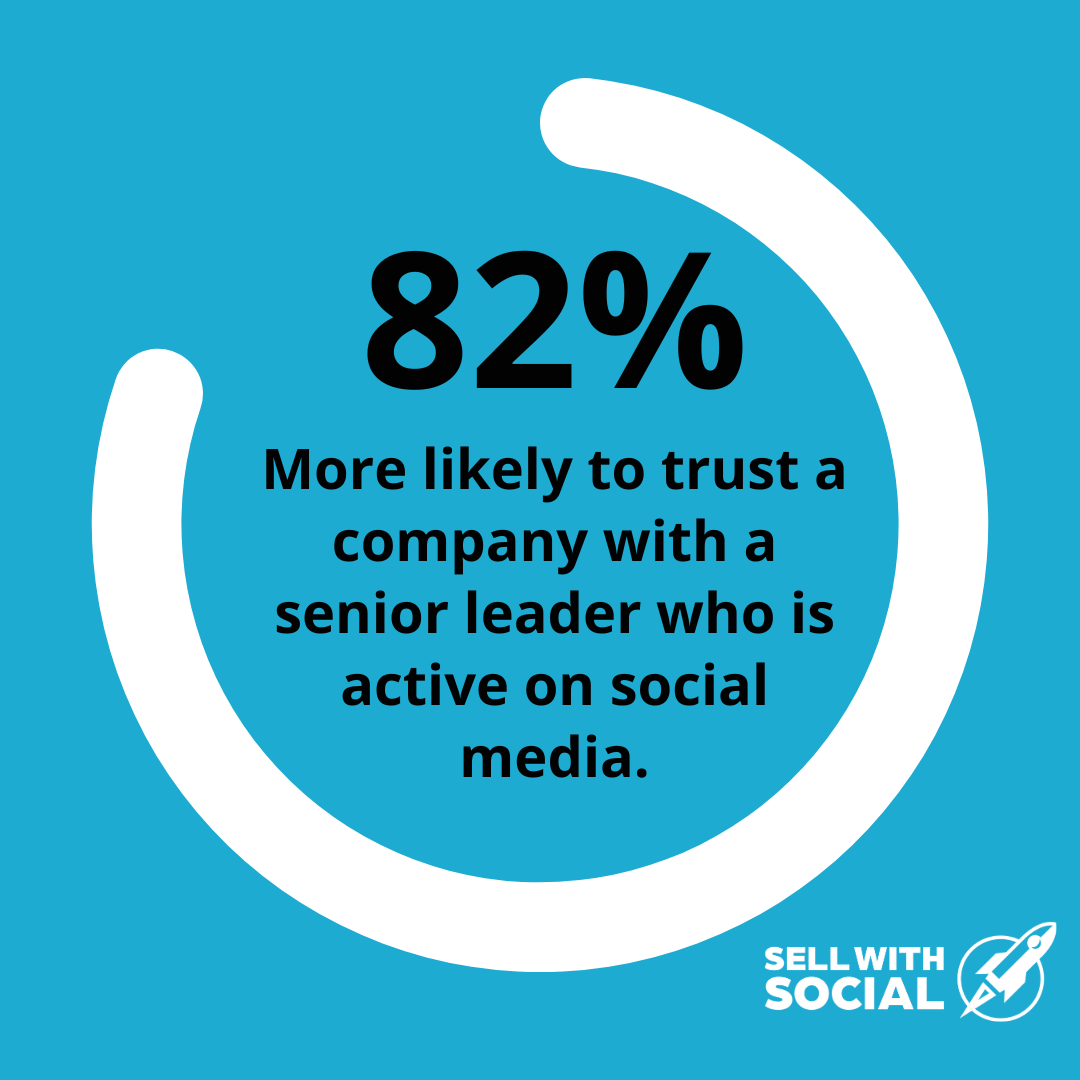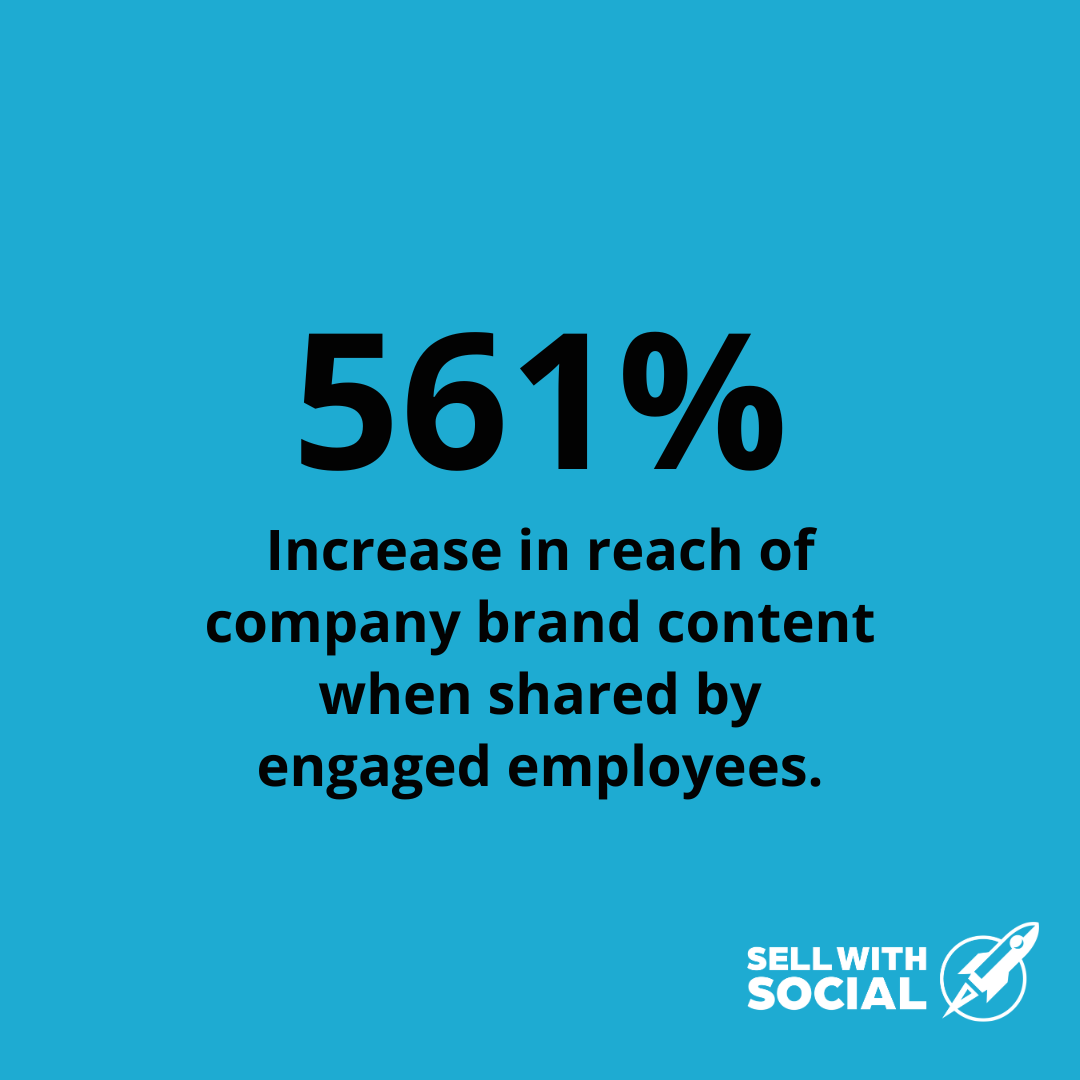The ROI of Personal Brands and Thought Leadership

What would it mean if your company could close 10 additional deals this year?
Or if you could reach 200,000 more people online?
Or if your close rate increased by 15%?
I’ve seen results like this firsthand when leaders build their personal brand and develop a strong thought leadership practice.
However, the truth is that building a personal brand and creating content takes time. And as we all know… time is money.
So for many businesses and leaders, it can be hard to justify their desire to create a personal brand for themselves. It’s easy to view it as a COST, instead of viewing it as an INVESTMENT.
But in reality, a strong personal brand can have a substantial positive impact on a company’s bottom line. Especially if that employee is leveraging their thought leadership to grow their network and build trust at scale.
In this week’s Sell with Social, we’ll dive into the ROI of developing a personal brand and thought leadership practice. We’ll also discuss what it means to be a thought leader and how it can impact your bottom line.
The Effectiveness of Thought Leadership
At the heart of building a strong personal brand and establishing thought leadership is the concept of educating and engaging your audience.
It's about positioning yourself not just as an expert, but as the favorite teacher in your industry.
This process involves creating and sharing educational content—be it insightful LinkedIn posts, informative videos, or engaging directly with your industry peers.
If you do this consistently, you begin to expand your reach and build your authority.
This is a potent combination that ultimately leads to more revenue.

The goal is to share knowledge in a way that is accessible, valuable, and engaging, thereby building trust and credibility. Through consistent educational efforts, you can become the go-to source for insights and information in your field, turning your personal brand into a powerful educational platform.
While this takes time and effort to create content consistently, the results build upon themselves. A great thought leadership strategy acts as a flywheel where you continue to scale both your reach and your authority over time.
Quantifying the ROI
Let’s now look at some actual statistics on how your thought leadership can help you build trust, increase opportunities, and engage your employees.
Trust and Credibility
First up is trust - the backbone of every business relationship and deal that is made. Here are some statistics on how you can build trust through thought leadership:
- Statistics reveal that only 33% of consumers trust brand messages, while almost 90% trust recommendations from individuals they know. This highlights the importance of personal branding in building trust and credibility, essential components of successful leadership and organizational growth. (Nielsen)
- Senior executives who are active on social media enhance their company's trustworthiness. 82% of people are more likely to trust a company whose senior leaders are active online.
- Moreover, 77% of consumers are more inclined to buy from a business whose CEO uses social media

Increased Opportunities and Revenue
This trust then translates into increased opportunities for your business and revenue generation. With expanded reach and higher perceived authority, you’ll be able to generate more leads and close more of them:
- 83% of a typical B2B purchasing decision happens before a buyer engages directly with a provider. This includes researching solutions, ranking options, benchmarking pricing, and more. (Gartner)
Or in other words, if you don’t have a thought leadership strategy, you’re very likely missing out on a majority of opportunities in the marketplace. And once you have opportunities in the pipeline, the ROI continues:
- 58% of decision-makers choose a business based on its thought leadership, and 61% are willing to pay premium prices for brands that articulate a clear vision through their thought leadership. (Edelman)
- 63% of buyers also say that thought leadership is important in providing proof that an organization genuinely understands or can solve your specific business challenges. (Edelman)
Employee Engagement and Reach
The benefits of thought leadership and personal branding aren’t limited to those outside of your organization. Internally, engaged employees can provide benefit in terms of increased productivity and a stronger company brand:
- Engaged employees who share brand messages amplify the company's reach by 561%, with their messages being reshared 24 times more often than those shared by the brand. (PostBeyond)
- This not only boosts the organization's visibility but also its overall performance, as companies with engaged employees outperform their peers by 202%.

Maximizing Your Impact
The key to getting a strong ROI is to be strategic with your thought leadership strategy. While showing up is half the battle, some intentionality behind your efforts can maximize your results.
Here are tips to ensure that your personal brand and thought leadership not only resonate with your audience but also drive tangible business outcomes.
- Align with Your Goals: Ensure that your personal branding and thought leadership efforts are closely aligned with your goals. Whether it's driving sales, attracting talent, or enhancing brand reputation, your efforts should contribute to these objectives.
- Target the Right Audience: Identifying and understanding your target audience is crucial. Tailor your content and messages to meet the needs and interests of this group, ensuring that your efforts reach and resonate with those most likely to engage with your brand.
- Leverage Analytics: Use analytics tools to track the performance of your content across different platforms. This data can help you understand what works, what doesn't, and where your efforts are having the most impact, allowing you to optimize your strategy accordingly.
- Focus on Quality Over Quantity: While consistency is key, quality should never be compromised. High-quality, insightful content is more likely to engage your audience and establish your credibility as a thought leader.
- Engage in Two-way Conversations: Foster an environment of engagement by encouraging feedback and participating in discussions. This two-way interaction not only builds community but also provides insights into your audience's preferences and needs.
- Optimize Your Digital Presence: Ensure that your online profiles are optimized for visibility and engagement. This includes using relevant keywords, updating your content regularly, and making it easy for followers to engage with you.
- Measure Impact on Sales Cycle: Directly link your personal branding and thought leadership efforts to the sales cycle. Track metrics such as lead generation, conversion rates, and customer acquisition costs to measure the direct impact on sales.
By implementing these strategies, senior leaders can ensure that their personal brand and thought leadership efforts not only enhance their reputation but also deliver a positive ROI by contributing to their organization's success.

For this week’s action items, I want you to consider the ROI of your thought leadership strategy. Start seeing time spent creating content as an investment, instead of a cost, and you’ll begin to open the doors of opportunity.
Here are three action items to consider this week:
- Review Your Activity - Make a note of all the activity that is currently going into your personal brand or thought leadership strategy. How much time are you spending creating content and engaging with your audience?
- Review Your Results - Review the deals, relationships, and audience reach that has come from your thought leadership. For harder ROI, ensure that your CRM has a way to measure deals that are influenced by your thought leadership content.
- Calculate the ROI - Do a high level calculation of the return on investment from your activity. If you are spending 10 hours a month on thought leadership strategy, how much revenue has that influenced? Assuming a strong ROI, then ask yourself how you can invest further in it.
